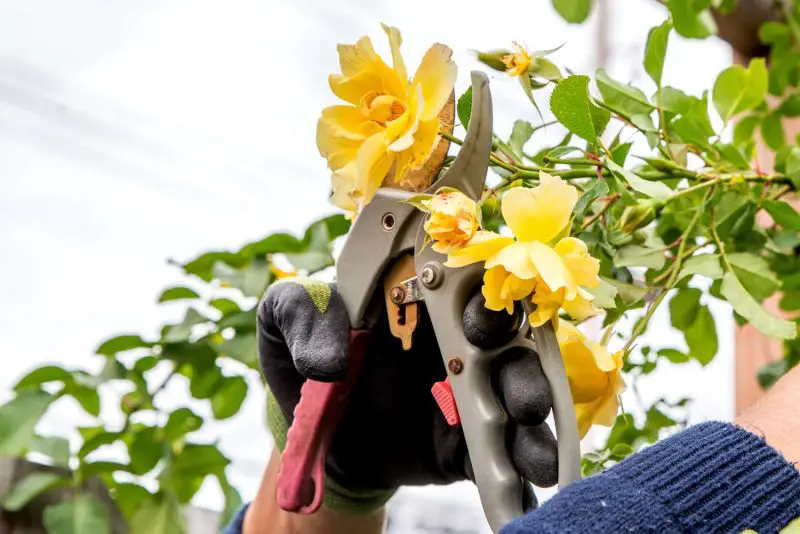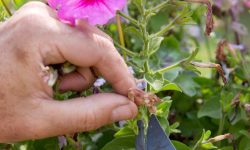Roses have long been celebrated as the queen of flowers, admired for their fragrance, elegance, and timeless charm. To keep these blooms radiant season after season, trimming plays a vital role. The question of when to trim roses often determines whether a garden thrives with vibrant color or struggles with weak growth. Timing is not just about appearance; it shapes the health, strength, and future beauty of every plant.
When done at the right moment, trimming breathes new life into roses, encouraging stronger stems and more abundant flowers. It prevents disease, promotes airflow, and sets the stage for breathtaking displays. This guide will explore the secrets of when to trim roses for lasting beauty. With careful timing and practical steps, you can transform your garden into a haven of color, fragrance, and timeless grace.
Why Timing Matters When Trimming Roses

Timing is the foundation of successful rose care. Cutting too early may expose tender shoots to frost, while trimming too late can remove new buds. Both mistakes limit flowering and weaken the plant’s natural rhythm. Roses, like all living things, follow seasonal cycles, and trimming must align with these patterns to achieve the best results. Proper timing ensures the plant conserves energy for growth and directs it toward producing abundant blooms.
Trimming at the right time also protects roses from pests and disease. Dead or overcrowded branches create hiding spots for harmful insects and restrict airflow. By pruning when the plant is ready, you remove these weak points before they cause damage. This preventive step reduces the need for chemical treatments and keeps your garden healthier. The timing of trimming, therefore, is not only about beauty but also about resilience and strength.
Another reason timing matters is the influence of climate and rose variety. A rose growing in a warm region responds differently than one in colder zones. Some bloom early, others later, requiring unique trimming schedules. Timing also affects how well the plant adapts to seasonal changes in light, temperature, and rainfall. Consistent mistakes in timing often lead to fewer flowers, weaker stems, and stressed plants. Understanding these variations allows gardeners to tailor their approach. When roses are trimmed in harmony with their environment, they reward you with vibrant flowers, robust foliage, and a longer season of enjoyment. Perfect timing truly shapes lasting beauty.
Best Seasons to Trim Roses
The best time to trim roses often depends on seasonal patterns. Spring is the most common season for trimming because it coincides with new growth. Cutting back during early spring encourages fresh shoots and prepares the plant for abundant summer blooms. At this stage, roses are awakening from dormancy, making them more responsive to pruning. Gardeners can easily see which branches survived the winter and which ones need removal.
Summer trimming also has its benefits, particularly after the first flush of flowers. Removing faded blooms and light pruning during this season encourages repeat blooming varieties to produce more flowers. It also helps maintain shape and prevents the plant from wasting energy on dead blossoms. Light summer trimming is less intense than spring pruning, but it plays an important role in sustaining color throughout the warmer months.
In colder climates, winter trimming is often avoided, as harsh weather can damage freshly cut stems. However, in milder regions, late winter pruning can prepare roses for strong spring growth. Autumn trimming is usually limited to removing diseased or broken branches to reduce stress before dormancy. Each season offers unique opportunities, but timing should always be adjusted to local conditions and the specific rose variety. By choosing the right season, gardeners can maximize both health and beauty in their rose gardens.
How Climate Affects Rose Trimming
Climate plays a powerful role in determining the right moment to trim roses. In regions with cold winters, gardeners must wait until the risk of frost has passed. Trimming too early in these climates may encourage tender new growth that freezes, damaging the plant before spring. Waiting until buds begin to swell ensures the plant is ready to channel energy into healthy shoots. Cold-hardy varieties often require careful attention to seasonal changes for successful trimming.
In warmer climates, roses may grow and bloom almost year-round. Gardeners in these regions often need to trim more frequently to keep the plants under control. Instead of one major pruning session, multiple lighter trims throughout the year are recommended. This approach keeps the plant balanced and prevents overgrowth while ensuring continuous blooms. Understanding how heat and long growing seasons affect roses helps maintain steady beauty in warm zones.
Humid and rainy climates introduce different challenges. Damp conditions increase the risk of fungal disease, so trimming must focus on improving airflow and reducing overcrowding. By cutting at the right time, gardeners prevent moisture from lingering on leaves and branches. This step lowers the chance of black spot or mildew spreading through the plant. Matching trimming schedules to climate not only encourages beautiful flowers but also protects roses from the specific threats of each environment.
Tools Needed for Proper Rose Trimming
Using the right tools makes rose trimming both effective and safe for the plant. A sharp pair of bypass pruners is the most important tool, as it creates clean cuts that heal quickly. Unlike anvil pruners, bypass blades slice smoothly through stems without crushing them. This reduces the risk of disease and helps the plant recover faster. For larger, woody stems, loppers provide extra strength and precision. These tools allow gardeners to cut thicker branches without causing unnecessary strain.
Another essential item is a good pair of gardening gloves. Roses have sharp thorns, and gloves protect your hands from scratches and punctures. Thick leather gloves are often preferred, as they resist tearing and offer better coverage. A small pruning saw can also be helpful when dealing with very old or thick branches that pruners cannot handle. Gardeners may also use long-handled shears for reaching deeper into dense shrubs without harming nearby stems. Having these tools ready before starting ensures a smoother and safer trimming process.
Cleaning and maintaining tools is just as important as choosing them. Dirty blades can spread diseases from one plant to another. Wiping tools with alcohol after each use prevents contamination and prolongs their life. Oiling joints and sharpening blades regularly keeps cuts precise and effortless. A clean cut reduces plant stress and speeds recovery, leading to stronger growth. Well-maintained tools not only protect roses but also make the gardener’s work easier and more enjoyable. With the right set of equipment, trimming becomes a precise task that supports the long-term health and beauty of your roses.
Benefits of Proper Rose Trimming
Proper trimming provides many benefits that go beyond appearance. One of the most visible advantages is the production of healthier and more abundant blooms. By removing old wood and weak stems, the plant directs energy toward new growth. This results in stronger stems capable of supporting larger flowers. The garden becomes more colorful and vibrant, with roses displaying their full potential throughout the season. Trimming at the right time sets the stage for a longer period of beauty.
Another benefit is improved airflow and light penetration. Overcrowded branches block sunlight and create damp, shaded areas. These conditions encourage pests and fungal diseases to spread quickly. By trimming correctly, you open the plant to better circulation, which keeps leaves drier and healthier. Sunlight reaches the inner stems, helping new shoots develop. This simple act of pruning reduces the risk of disease and minimizes the need for chemical treatments.
Trimming also improves the overall structure of the rose plant. Well-shaped bushes are more resistant to wind and weather stress. A balanced framework supports continuous growth, making roses easier to maintain. Gardeners also enjoy a more attractive landscape, with neat and tidy shrubs that complement other plants. Proper trimming is not just maintenance but an investment in the future of the garden. It enhances beauty, strengthens the plant, and ensures roses remain a highlight for years.
Techniques for Trimming Different Rose Varieties
Different rose varieties require unique trimming techniques to achieve the best results. Hybrid tea roses, known for their elegant long stems and large flowers, benefit from a harder prune. Cutting them back to about one-third of their height encourages strong new shoots. This method directs the plant’s energy into producing fewer but larger, high-quality blooms. The structure also stays open, allowing air and light to reach all parts of the plant.
Shrub roses, on the other hand, thrive with lighter pruning. These varieties naturally grow in a bushy form, so removing too much wood can spoil their natural shape. Instead, gardeners should focus on thinning the center and removing dead or crossing branches. Light pruning helps maintain their rounded structure while encouraging steady flowering. Shrub roses often respond well to careful shaping rather than heavy cutting, keeping them full and colorful.
Climbing roses require a different approach altogether. Instead of cutting them back hard, the goal is to train long canes along a support. Lateral branches are then trimmed lightly to encourage flowering. By tying the main canes horizontally, gardeners increase the number of buds along each stem. This method transforms a wall, trellis, or arch into a stunning display of blooms. Adapting techniques to suit each type ensures every rose variety flourishes and shows its true beauty.
Step-by-Step Guide to Trimming Roses
Trimming roses begins with careful preparation. Start by gathering clean, sharp tools such as bypass pruners, loppers, and protective gloves. Before making any cuts, inspect the plant closely. Identify dead wood, diseased stems, and weak growth that needs removal. Always cut at a forty-five-degree angle just above an outward-facing bud. This encourages new shoots to grow outward, creating an open structure with better airflow. Preparation ensures that each cut benefits the plant rather than causing harm.
The next step is to remove all dead, damaged, or crossing branches. Dead wood is usually darker in color and brittle to the touch. Cutting these stems prevents pests and diseases from spreading. Crossing branches should also be removed because they rub against each other and create wounds. After removing weak and unhealthy growth, thin out the center of the plant. This step improves light penetration and airflow, helping the rose stay vigorous. It also creates space for new growth to emerge without crowding.
Finally, shape the plant for balance and beauty. Cut back remaining healthy stems to the desired height, usually about one-third for most varieties. Ensure the plant has an open, vase-like structure. This allows sunlight to reach every part of the bush and keeps moisture from lingering on leaves. Dispose of all trimmings to prevent disease from reappearing. For climbing roses, tie canes securely to supports after trimming to guide growth. With this complete process, trimming becomes a structured practice that supports healthy growth, strong blooms, and long-lasting beauty.
Regional Considerations for Trimming Roses
Trimming Roses in Cold Regions
In colder regions, pruning roses requires careful timing to prevent frost damage. Cutting back too early in late winter often stimulates tender new shoots that are highly vulnerable to sudden freezes, which can weaken or even kill the plant. The safer strategy is to wait until spring, when buds begin to swell and the danger of hard frost has passed. At this stage, pruning encourages the plant to channel its energy into strong, healthy growth that can withstand the season ahead. A light trim in fall is also beneficial, focusing only on removing broken or diseased stems so roses enter dormancy in better condition and are less prone to infection spreading over winter.
In addition to pruning practices, providing protection during the cold months helps ensure roses survive harsh conditions. Applying a thick layer of mulch around the base insulates the roots and reduces damage from fluctuating soil temperatures. Some gardeners also mound soil or compost around the crown to protect the most vulnerable parts of the plant. With this combination of light fall trimming, delayed spring pruning, and proper winter care, roses in cold regions remain resilient and are better prepared to deliver vigorous growth and abundant blooms once warmer weather arrives.
Trimming Roses in Warm Regions
In warm regions, rose trimming follows a slightly different rhythm since harsh frosts are rarely a concern. Gardeners can prune more confidently in late winter or early spring, focusing on removing old, woody stems and shaping the plant for new growth. Because the growing season is longer, pruning at this time encourages roses to produce strong shoots that quickly develop into healthy flowering stems. A lighter trim can also be done after each bloom cycle, which helps extend the flowering season and keeps plants looking fresh and vibrant throughout much of the year.
Summer pruning in warmer climates is generally minimal, limited to deadheading spent flowers and clearing away weak or crossing stems. This maintenance keeps airflow open and reduces the risk of fungal problems that thrive in humid conditions. Some gardeners also give roses a moderate cut in midsummer to encourage a flush of late-season blooms. By following this seasonal approach—major trimming in early spring and light maintenance during active growth—roses in warm regions remain productive, vigorous, and consistently full of colorful blossoms.
Trimming Roses in Mild Regions
In mild regions, rose trimming is more flexible because winters are not severe and growing seasons are steady. Gardeners typically prune in late winter or very early spring, just before vigorous growth resumes. At this stage, removing old or weak stems and shaping the plant encourages a balanced structure that supports abundant blooms. Since frost damage is rarely a major concern, pruning can be slightly earlier than in cold regions, giving roses a head start on healthy growth. Light fall trimming is also useful to tidy plants and prevent overcrowding during the cooler months.
Because roses in mild climates often flower multiple times a year, maintenance pruning throughout the growing season is especially important. Deadheading spent flowers, cutting back weak stems, and thinning crowded growth ensure roses keep producing fresh, colorful blossoms. This routine also improves airflow, reducing the risk of mildew and black spot, which can persist in mild, damp conditions. By combining a main pruning session in late winter with light seasonal touch-ups, gardeners in mild regions can enjoy long-lasting roses that stay vigorous and attractive almost year-round.
Caring for Roses After Trimming
After trimming, roses need extra attention to recover and direct their energy toward strong growth. Start by watering the plant deeply, ensuring the roots have enough moisture to support new shoots. A layer of mulch around the base will help retain soil moisture, regulate temperature, and suppress weeds, giving the roses a healthy environment to thrive. Avoid letting the mulch touch the stems directly, as this can trap moisture and invite disease.
Fertilizing is equally important after trimming. Apply a balanced rose fertilizer or a slow-release organic blend to provide essential nutrients that encourage new foliage and abundant flowering. Feed the plant according to the product’s instructions, usually once every four to six weeks during the growing season. Healthy nourishment at this stage helps roses recover quickly from pruning stress and prepares them for continuous blooming cycles throughout the season.
Finally, keep a close eye on plant health in the weeks following trimming. Remove any leaves showing signs of disease and watch for common pests such as aphids or spider mites. Good air circulation, achieved through proper pruning, already reduces risks, but additional vigilance ensures your roses stay strong. If needed, treat problems early with organic insecticidal soap or fungicide. With attentive watering, feeding, and monitoring, your roses will flourish, producing vibrant, long-lasting blooms that make your garden truly stand out.
Common Mistakes to Avoid When Trimming Roses
Trimming at the Wrong Time
One of the most frequent mistakes is trimming roses too early or too late in the season. Cutting back before the last frost can trigger new growth that is easily damaged by cold weather. On the other hand, trimming too late in the year may remove buds that were set to bloom, reducing the overall flower display. Timing is crucial, and ignoring seasonal cycles can weaken the plant’s natural rhythm. Some gardeners mistakenly prune during dormancy without checking local climate, which can also disturb the plant’s natural rest period.
The solution is to carefully observe local weather and plant signals. Buds beginning to swell in spring often indicate the best time to prune. In warmer climates, light trimming throughout the year works better than one heavy session. Gardeners in humid areas may also benefit from trimming earlier to improve airflow and prevent fungal diseases. By paying attention to both regional conditions and rose variety, you create the perfect window for trimming. Learning to adjust timing prevents stress, reduces disease risk, and ensures healthy, continuous blooms that bring beauty across the season.
Cutting Too Much or Too Little
Another mistake is cutting excessively or not enough. Over-trimming strips the plant of too many branches, leaving it weak and slow to recover. Roses need healthy stems and leaves to produce energy, and removing too much reduces their ability to thrive. Under-trimming, however, leaves behind dead or overcrowded branches that restrict airflow. This creates an environment where pests and disease can easily spread. Both extremes disturb the balance that roses need for strong growth.
The best approach is to aim for moderate pruning. Removing around one-third of the plant during the main season keeps roses healthy without overwhelming them. This method eliminates damaged stems, improves light penetration, and encourages new shoots. In summer, light trimming after blooms fade helps extend flowering. By practicing restraint and consistency, gardeners avoid stressing the plant while ensuring it remains vibrant. Balanced trimming strengthens the root system, promotes lush foliage, and leads to bigger, longer-lasting blooms each year.
Using the Wrong Tools
Using the wrong tools when trimming roses is a mistake that can cause lasting harm. Dull blades crush stems instead of slicing cleanly, leaving ragged wounds that heal slowly. These open cuts invite pests and disease, weakening the plant over time. Similarly, using heavy anvil pruners instead of bypass pruners often damages tender growth. Some gardeners even attempt to break branches by hand, which can split the wood unevenly and stress the plant. Choosing poor tools makes trimming harder and less effective.
The solution is to invest in high-quality, well-maintained equipment. Sharp bypass pruners are ideal for small to medium stems, while loppers or pruning saws work best for thick, woody branches. Gardening gloves protect hands from thorns, making the task safer and more comfortable. After each session, tools should be cleaned with alcohol to prevent the spread of disease. Regular sharpening ensures smooth cuts, and oiled joints keep pruners working efficiently. With the right tools, trimming becomes precise, safe, and beneficial for the plant’s long-term health.
FAQ About Trimming Roses
When is the best time to trim roses?
The best time to trim roses is in early spring, just as buds begin to swell but before they fully open. This timing encourages healthy new growth, prevents damage from late frosts, and sets the foundation for a season filled with vibrant, long-lasting flowers.
Can I trim roses in the fall?
You can lightly trim roses in the fall to remove dead, diseased, or damaged stems. However, avoid heavy pruning during this time because it can expose the plant to cold injury. The main pruning should always be saved for spring when conditions are more favorable.
How much should I cut when pruning roses?
A good rule is to cut back about one-third of the plant in spring, focusing on removing weak, crossing, or inward-facing stems. This helps improve air circulation, strengthens the structure, and encourages roses to direct energy into producing larger, healthier, and more abundant blooms.
What happens if I don’t trim my roses?
Without trimming, roses become leggy, overgrown, and more susceptible to pests and fungal diseases. Airflow decreases, and flowers may be fewer and smaller. Regular pruning revitalizes the plant, encourages repeat blooming, and ensures your roses maintain their natural shape, beauty, and lasting garden performance.
Do different rose types need different pruning times?
Yes, pruning times vary depending on rose type. Hybrid teas, floribundas, and grandifloras respond best to early spring pruning. Climbing roses, however, should often be pruned after their first major bloom. Understanding your rose variety ensures you prune at the right time for maximum flowering success.
Conclusion
Trimming roses at the right time is the secret to enjoying healthier plants, vibrant blooms, and lasting garden beauty. With proper timing in spring, light maintenance during summer, and careful adjustments for different rose varieties, you can ensure your roses thrive year after year. Pruning not only shapes the plant but also directs energy into producing abundant flowers while preventing disease. Whether you’re growing hybrid teas, floribundas, or climbers, consistent trimming will reward you with a more radiant garden. Master this simple practice, and your roses will never fail to impress.






